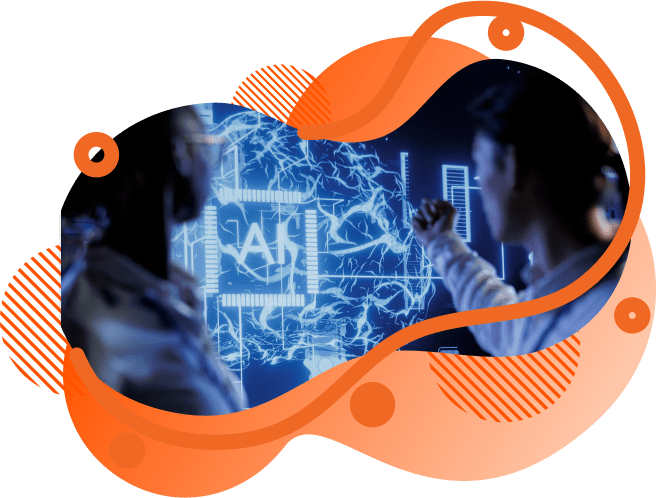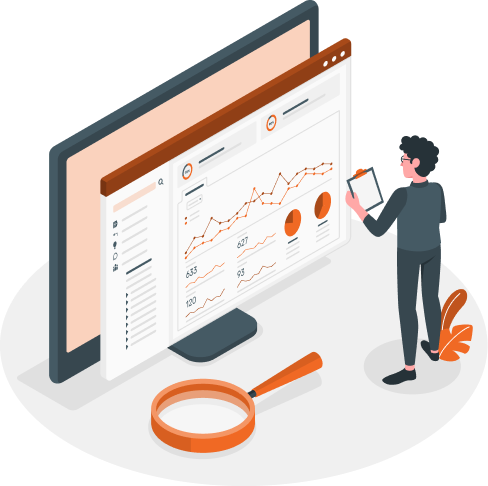Agent2Agent Protocol (A2A) — Seamless AI-to-AI Communication

Key Highlights:
- Enables inter-agent communication without central orchestration.
- Designed for scalable and modular AI ecosystems.
- Promotes real-time coordination and intelligent task distribution.
- Built with security, context-awareness, and flexibility in mind.
- Supports integration with LLMs, robotics, IoT, and autonomous systems.
Core Components of the A2A Framework:
Agent Identity & Roles
Each agent is assigned a unique identity, role, and capability profile, allowing clear differentiation and task specialization across agents.
Message Protocol Layer
Standardized messaging formats ensure interoperability, context-awareness, and structured communication across heterogeneous agent systems.
Intent & Task Engine
Facilitates goal-driven behavior, interpreting tasks and delegating responsibilities based on real-time priorities and agent capabilities.
Context Management System
Maintains a shared understanding of the environment by syncing real-time state, knowledge graphs, and agent memory.
Security & Trust Layer
Incorporates authentication, encryption, and trust verification mechanisms to ensure secure communication among agents.
1. Decentralized by Design
2. Context-Aware Communication
3. Interoperability Across Technologies
4. Security & Trust Mechanisms
5. Goal-Oriented Architecture

How A2A Works
Intelligent Agents That Communicate, Coordinate, and Evolve Together
Secure Collaboration
Task and State Management
User Experience Negotiation
Capability Discovery
Where A2A Delivers Impact:
Human-Agent and Agent-Agent Workflows:
Enable seamless handoffs between humans and autonomous agents or between multiple agents. A2A supports collaborative tasks, decision support systems, and conversational AI flows that adapt in real time.
Multi-Modal Coordination (Voice, Text, Action):
Agents can operate across various input/output channels, coordinating tasks across spoken commands, visual UIs, or physical robotic actions—making A2A ideal for assistive systems, smart environments, and robotic fleets.
Real-Time Decisions in Decentralized AI Networks:
In environments with no central control (e.g., edge AI, federated learning, IoT ecosystems), A2A allows agents to negotiate, plan, and act autonomously, while remaining synchronized with the overall system goal.
Choosing the Right Protocol for Your AI Communication Architecture
Agent2Agent (A2A) Protocol
- Focus: Enables direct communication between autonomous AI agents.
- Purpose: Designed for multi-agent coordination, collaborative workflows, and real-time decision-making.
- Communication: Peer-to-peer, decentralized, and intent-based.
- Use Case: Best suited for distributed agent networks, AI assistants, robotic fleets, and enterprise multi-agent systems.
- Features: Capability discovery, secure collaboration, contextual messaging, negotiation logic.
Model Context Protocol (MCP)
- Focus: Structure context input for LLMs (Large Language Models).
- Purpose: Delivers structured, layered context (e.g., user profile, task history, app metadata) into model prompts.
- Communication: Unidirectional input feeding into an LLM or inference engine.
- Use Case: Ideal for LLM orchestration, memory management, chat agents, and app integrations.
- Features: Context framing, role-based scoping, input segmentation, lightweight overhead.
Powering Next-Gen AI Systems with the Agent2Agent (A2A) Protocol
Healthcare AI Systems
A2A powers secure, HIPAA-compliant communication between clinical agents, diagnostic bots, and hospital management systems, transforming healthcare workflows.
Use Cases:
- Automated patient triage and intelligent handoffs between virtual health agents
- Coordination between diagnostic AI systems and treatment planning agents
- Multi-agent collaboration for remote patient monitoring and telehealth services
Smart Manufacturing & Industry 4.0
A2A supports autonomous factory operations by connecting AI-powered machinery, quality control bots, and predictive maintenance agents across the industrial floor.
Use Cases:
- Adaptive production line orchestration via real-time agent coordination
- AI-driven inventory management through negotiation among warehouse agents
- Maintenance agents proactively identify and schedule repairs based on sensor analytics
Logistics & Supply Chain Automation
A2A enables real-time logistics optimization by allowing intelligent transport agents, warehouse bots, and fleet coordinators to work together seamlessly.
Use Cases:
- Just-in-time delivery coordination using decentralized agent communication
- Autonomous vehicle agents and drones negotiating optimal routing
- Real-time inventory tracking and global supply chain synchronization
Enterprise Virtual Assistants
In enterprise ecosystems, A2A links departmental AI agents to automate workflows across HR, finance, IT, and operations.
Use Cases:
- HR agents collaborating with payroll and compliance bots
- AI copilots working across tools like Slack, Notion, and CRM platforms
- Intelligent assistants dynamically delegating tasks to specialized AI agents
Robotics & Edge AI Systems
A2A empowers robotic ecosystems and edge computing agents to operate autonomously in dynamic environments, such as warehouses, farms, or smart homes.
Use Cases:
- Robots coordinating goals (e.g., area scanning, item retrieval) through peer communication
- Swarm intelligence systems for obstacle avoidance and group behavior
- Mixed-reality agents integrating with vision models and voice interfaces at the edge
Smart Cities & Urban Infrastructure
A2A facilitates the operation of urban intelligence systems by enabling agents to manage infrastructure, mobility, and emergency response in a decentralized manner.
Use Cases:
- Traffic control agents are optimizing signal timing and flow based on real-time data
- Utility bots negotiating energy grid optimization and load balancing
- Public safety agents coordinating emergency response and citizen alerts autonomously
Building Intelligent Systems That Think, Communicate, and Act—Autonomously
Architecting Intelligent Agent Ecosystems
We design A2A systems from the ground up—defining how agents should interact, reason, and scale together. Our team ensures the architecture supports your domain-specific goals, whether it's in healthcare, logistics, finance, or robotics.
- We focus on making your agents context-aware, goal-driven, and fault-tolerant—so your systems perform in real-world, real-time environments.
Custom AI Agent Development
We build autonomous agents tailored to your operational use cases. Whether they need to negotiate tasks, discover capabilities, or collaborate with LLMs, our agents are engineered to be intelligent, modular, and production-ready.
- From diagnostics agents in hospitals to swarm bots in factories—we’ve built it before. We’ll build it better for you.
Seamless A2A Protocol Integration
We integrate A2A into your existing tech stack with minimal disruption—bridging the gap between legacy systems, modern APIs, cloud platforms, and edge environments.
- Your agents don’t work in isolation—neither do we. Our integration approach is fast, future-proof, and frictionless.
Agent Simulation, Testing & Validation
We develop agent simulation environments to test for scalability, failure handling, and collaborative logic before anything goes live.
- You don’t need guesswork—you need confidence. That’s why every A2A system we ship is validated against edge cases and real-world stressors.
LLM + A2A + MCP Implementation
We specialize in building agents that combine LLM intelligence (GPT-4o, Claude, Gemini) with A2A coordination and MCP context injection—giving you reasoning agents that understand, act, and adapt on the fly.
- Want agents that think like humans but collaborate like machines? We’ll build that—end to end.
Security, Trust & Governance Layer
Security is foundational, not optional. We embed encryption, identity validation, trust scoring, and audit trails at the protocol level.
- From finance to defense—we’ve delivered A2A systems where failure is not an option. Trust our track record.
Built for Scale. Engineered for Intelligence. Delivered with Precision.
Proven Expertise in Multi-Agent Systems
We’ve delivered production-grade multi-agent systems across healthcare, supply chains, robotics, finance, automotive, and smart infrastructure.
Our expertise covers:
- Real-time coordination logic across decentralized environments
- LLM-embedded agents for reasoning and dialogue
- Swarm intelligence for robotics and autonomous systems
- Multi-modal agent interactions (text, voice, sensors, APIs)
Protocol design and standardization for enterprise environments

From R&D to Live Deployment—End to End
We handle the full development lifecycle—from architectural design and simulation to deployment and maintenance.
We’ve helped clients:
- Design scalable agent ecosystems from scratch
- Integrate A2A with MCP, LLMs, and edge AI
- Run simulations for failure recovery, agent negotiation, and load balancing
- Deploy to cloud, on-premise, and hybrid infrastructures
We don’t hand off a spec—we build, validate, and deliver fully operational systems.
Secure, Compliant, and Enterprise-Grade
Our solutions are built with zero-trust principles, ensuring they meet security and compliance standards across highly regulated sectors.
We offer:
- End-to-end encryption, PKI-based identity management
- Policy-based communication governance
- Auditable agent interactions and real-time threat detection
Compliance with HIPAA, GDPR, SOC 2, and more
Transparent, Collaborative Partnership Model
We act as a strategic extension of your in-house team—aligning with your product roadmap, collaborating deeply, and delivering iteratively.
You get:
- Direct access to our core technical experts
- Fast response cycles and milestone-based planning
- A focus on measurable value, not just delivery
- Complete IP and documentation ownership—no lock-ins